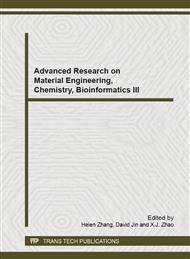p.448
p.455
p.459
p.463
p.469
p.473
p.477
p.481
p.485
Effect of Biological Materials Including Sucrose and Bacteria Ratios on the Fermentation of Goat Yogurt
Abstract:
Effect of biological materials including sucrose concentration and bacteria ratios on fermentation of goat yogurt was studied by measuring acidity, pH and viable counts. Sucrose concentration (v/v) was 4%, 6%, 8%, 10% and 12%. The ratios of Lactobacillus bulgaricus and Streptococcus thermophilus were 1:3, 1:2, 1:1, 2:1 and 3:1, respectively. The results were as follows: lower or higher sucrose concentration and bacteria ratios resulted in adversely influence on overall properties of goat yogurt. The optimum sucrose concentration in goat milk was 8% and bacteria ratios were 2:1, respectively.
Info:
Periodical:
Pages:
469-472
Citation:
Online since:
October 2013
Authors:
Keywords:
Price:
Сopyright:
© 2014 Trans Tech Publications Ltd. All Rights Reserved
Share:
Citation:


